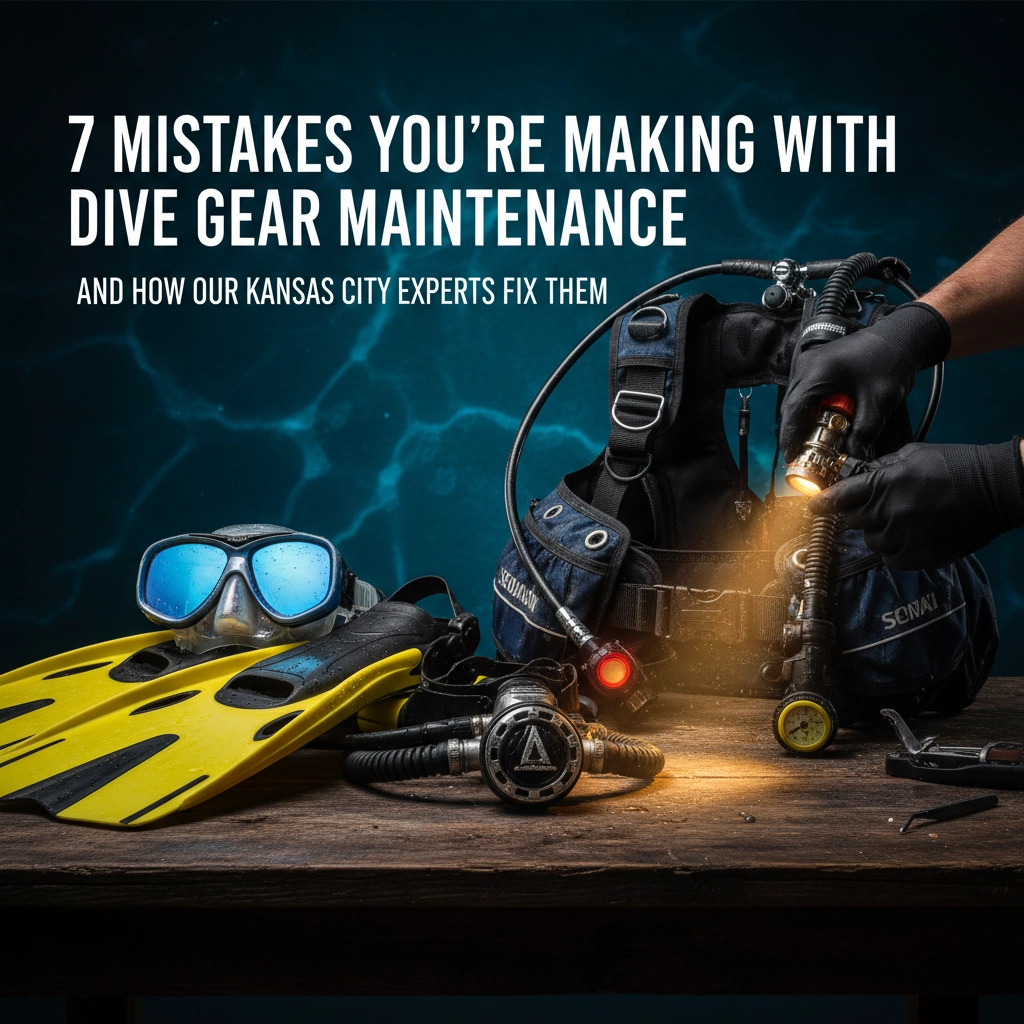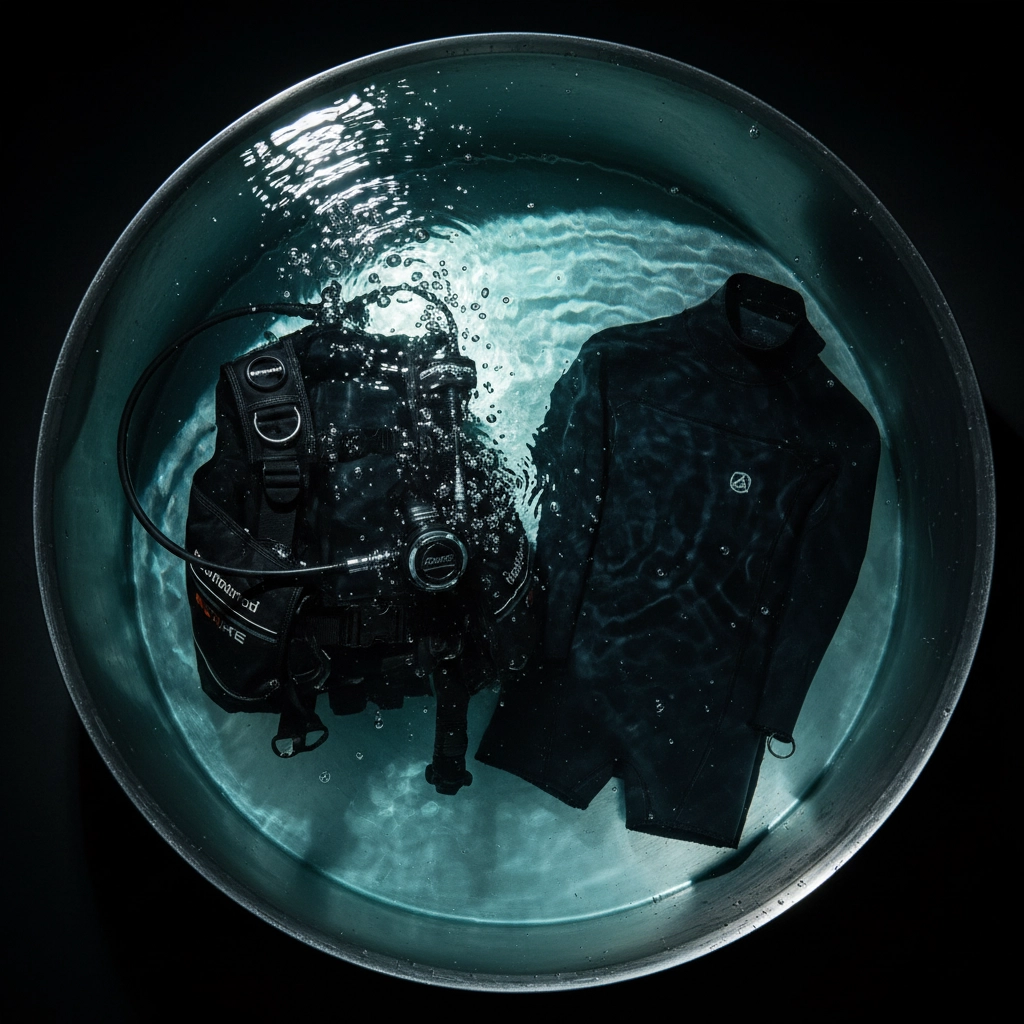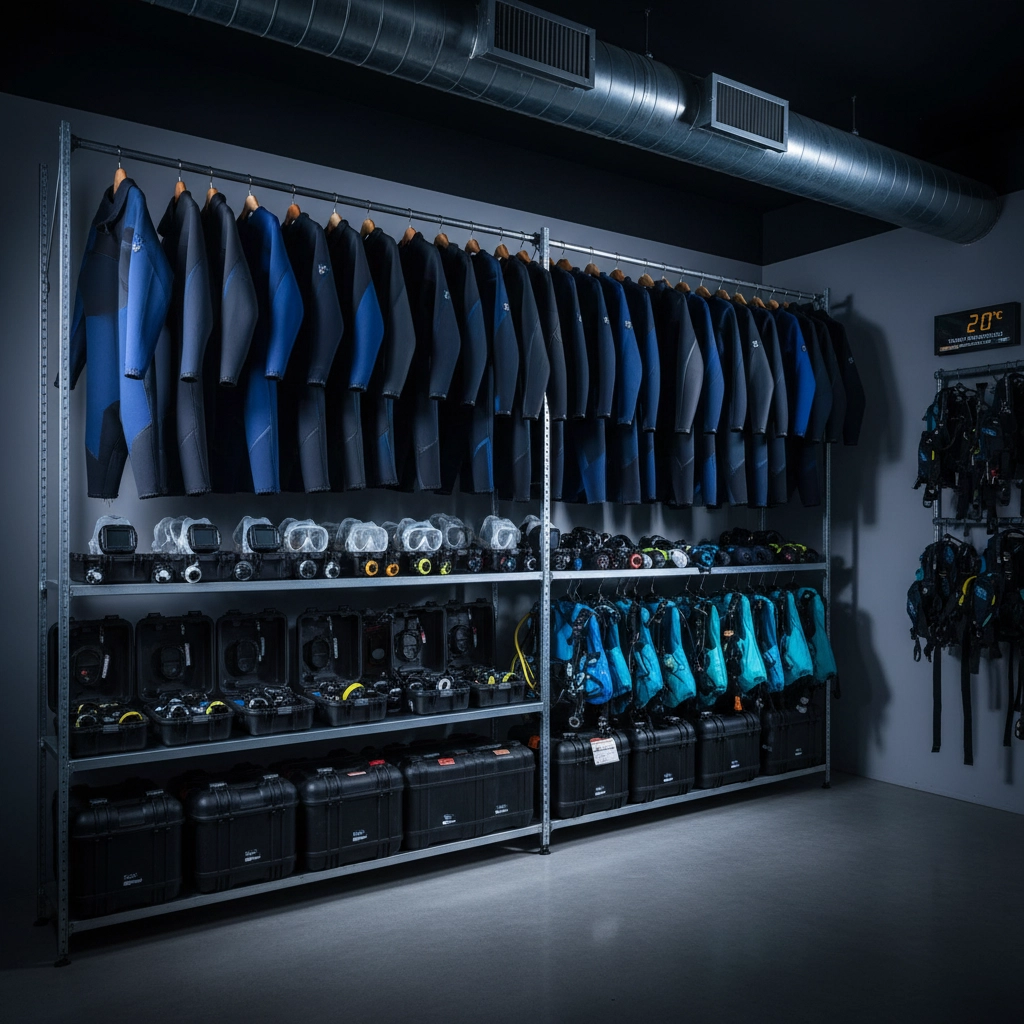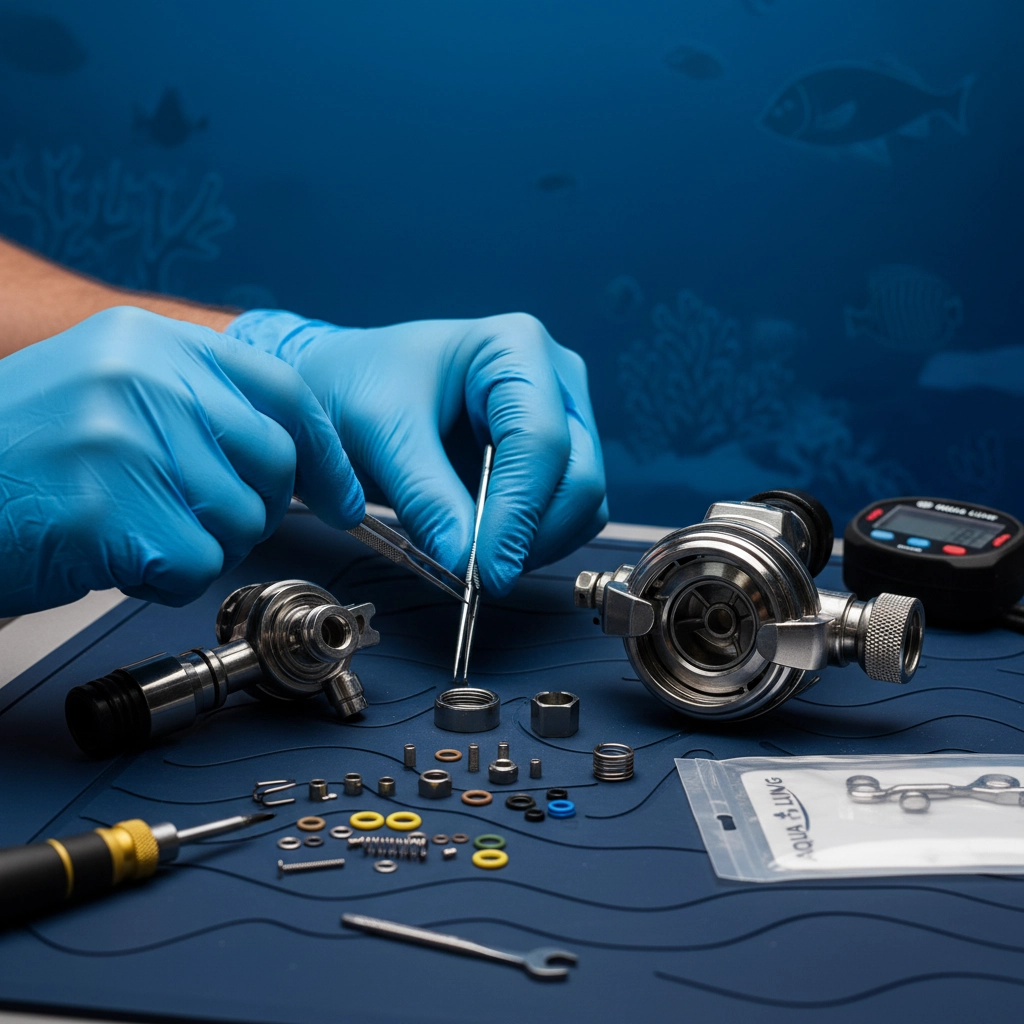7 Mistakes You're Making with Dive Gear Maintenance
Zach Haddock Oct 05, 2025
7 Mistakes You're Making with Dive Gear Maintenance (And How Our The KC Dive Shop Expert Fix Them)

Let's be real – your scuba gear is expensive, and more importantly, it's what keeps you alive underwater. Yet we see divers make the same maintenance mistakes over and over again here at The Dive Shop Kansas City. Whether you're diving the local quarries or planning that dream Caribbean vacation, proper gear maintenance isn't just about saving money (though it definitely does that). It's about ensuring your equipment works flawlessly when you're 60 feet down and need it most.
After years of servicing equipment and training divers in Missouri and beyond, we've identified the seven most common – and costly – mistakes divers make with their gear. The good news? They're all totally fixable with the right knowledge and habits.
Mistake #1: Skipping the Post-Dive Rinse (Or Doing It Wrong)
This is the big one, folks. We can't tell you how many regulators, BCDs, and wetsuits we've seen destroyed by salt, chlorine, and lake minerals because someone thought a quick splash of water was good enough.
Here's what happens: You finish your dive, you're tired, maybe a little cold, and you just want to pack up and grab some barbecue. So you give your gear a half-hearted rinse and call it good. Meanwhile, corrosive particles are settling into every crevice of your equipment, starting their slow but steady destruction.
The KC Dive Shop Expert Fix: Every single piece of gear needs a thorough freshwater rinse immediately after diving. We're talking about soaking, not just splashing. Your regulator needs special attention – submerge the first stage in fresh water while keeping the dust cap on, and soak your second stage without pressing the purge button. Let everything soak for at least 10-15 minutes, then rinse thoroughly.
For gear that's been in particularly harsh conditions (like those salty ocean dives), we recommend adding a mild detergent solution to the rinse water. Your future self will thank you when your gear lasts twice as long.

Mistake #2: Storage Nightmares
We've seen it all: wetsuits stuffed in hot car trunks, regulators stored in damp basements, and BCDs hanging in direct sunlight for months. Each of these scenarios is a recipe for expensive replacement gear.
UV rays break down neoprene and plastic components. Moisture trapped in closed spaces creates perfect breeding grounds for bacteria and mold. Extreme temperatures cause seals to crack and electronics to fail. It's like creating the perfect storm for gear destruction.
The Kansas City Expert Fix: Think of gear storage like wine storage – cool, dark, and dry is the way to go. After your post-dive rinse, let everything air dry completely in a shaded, well-ventilated area. Never store wet gear, especially in closed containers or bags.
For long-term storage, we recommend hanging wetsuits on padded hangers, storing regulators in protective cases with silica gel packets, and keeping BCDs partially inflated in a climate-controlled space. If you don't have ideal storage conditions at home, ask us about our gear storage services.
Mistake #3: Playing Doctor with Your Regulator
Look, we get it. You're a smart person, you've got some tools, and that regulator doesn't look that complicated. But here's the thing – attempting DIY regulator repairs is like performing surgery on yourself. It might seem doable until something goes very, very wrong.
We regularly see regulators that have been "fixed" by well-meaning divers, only to find damaged internal components, incorrectly installed parts, or worse – safety mechanisms that have been compromised. Your regulator is literally life support equipment. This isn't the time for YouTube University.
The Kansas City Expert Fix: Annual professional servicing, no exceptions. Our certified technicians have the specialized tools, genuine parts, and training needed to keep your regulator functioning perfectly. We check internal components you can't see, replace wear items before they fail, and ensure everything meets manufacturer safety standards.
Between services, limit your DIY efforts to external cleaning and basic visual inspections. If something doesn't look right, bring it in. We'd rather take a look at a healthy regulator than perform emergency repairs on a failed one.
Mistake #4: The Purge Button Trap
This one's subtle but deadly: pressing the purge button on an unpressurized regulator while it's underwater. It seems harmless – you're just testing the button, right? Wrong. You've just invited water into internal chambers that were designed to stay dry.
The same thing happens when divers loosen yoke screws underwater without tank pressure. Water rushes into spaces where it doesn't belong, and suddenly your regulator needs a complete overhaul instead of just a rinse.
The Kansas City Expert Fix: Simple rule – never manipulate regulator controls when the system is unpressurized and submerged. Keep your regulator connected to a pressurized tank during underwater handling, or better yet, remove it from the water before making any adjustments.
If you accidentally purge an unpressurized regulator underwater, don't panic, but bring it in for service before your next dive. Water in the wrong places can cause serious malfunctions, and it's not worth the risk.

Mistake #5: Chemical Warfare on Your Gear
We've seen divers use everything from bleach to WD-40 on their equipment, thinking they're helping with cleaning or lubrication. Spoiler alert: you're not helping, you're causing expensive damage.
Chemical solvents, petroleum products, abrasives, and household cleaners can destroy rubber seals, degrade plastics, and contaminate internal mechanisms. We've seen o-rings dissolved by cleaning products and plastic components that became brittle and cracked after exposure to the wrong chemicals.
The Kansas City Expert Fix: When in doubt, use fresh water and mild soap designed for diving equipment. For stubborn deposits, bring your gear to us rather than experimenting with household chemicals. We stock manufacturer-approved cleaning products and know exactly what's safe for each component.
For lubrication needs, only use products specifically designed for diving equipment. Different manufacturers have different requirements, and using the wrong lubricant can actually cause more problems than no lubricant at all.
Mistake #6: The "Set It and Forget It" Mentality
Some divers treat their equipment like a Toyota Camry – expecting it to run forever without maintenance. They'll use the same gear for years without professional service, ignoring small signs of wear until something fails catastrophically.
This mentality is particularly dangerous with life support equipment. Small problems become big problems, and big problems become safety emergencies. We've seen hoses fail during dives, regulators free-flow at depth, and BCD inflators stick open – all preventable with regular maintenance and inspection.
The Kansas City Expert Fix: Implement a regular inspection routine. Before every dive, check your gear systematically: inspect hoses for cracks or bulges, test all inflator and deflator mechanisms, verify gauge accuracy, and look for any signs of corrosion or wear.
Keep a simple logbook for your equipment – note service dates, any issues you've observed, and replacement part installations. This helps our technicians provide better service and helps you budget for equipment needs.

Mistake #7: Ignoring the Small Stuff
It's easy to focus on the big-ticket items like regulators and computers while ignoring "minor" components like clips, retractors, and mesh bags. But these small items often fail first and can ruin entire dive trips when they break at inconvenient moments.
We see divers with perfectly maintained primary equipment whose dives are ruined by a broken fin strap, corroded clip, or torn mesh bag. These items are inexpensive to replace but devastating when they fail underwater.
The Kansas City Expert Fix: Include all your gear in your maintenance routine, not just the expensive stuff. Rinse and inspect everything after each dive day. Keep spare parts for items that commonly fail – fin straps, o-rings for underwater cameras, and replacement batteries for dive lights.
Create a simple checklist and go through it systematically. It takes five extra minutes but can save your entire dive vacation. We stock replacement parts for most common accessories and can help you put together a basic repair kit for travel.
Making Maintenance a Habit
The truth is, proper dive gear maintenance isn't complicated or time-consuming – it just requires consistency. The divers who get decades of life from their equipment aren't necessarily spending more money; they're just developing better habits.
Here at The Dive Shop Kansas City, we're always happy to help you establish good maintenance routines or answer questions about caring for your specific equipment. Whether you're a brand-new open water diver or a seasoned tech diver, taking care of your gear is one of the most important skills you can develop.
Remember: your equipment takes care of you underwater, so take care of it on the surface. The few minutes you spend on proper maintenance after each dive could literally save your life on future ones.
Ready to give your gear the professional attention it deserves? Stop by our shop or give us a call to schedule your next service appointment. Your equipment – and your safety – will thank you for it.
